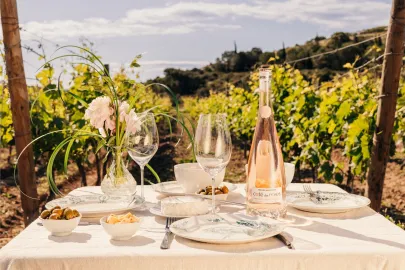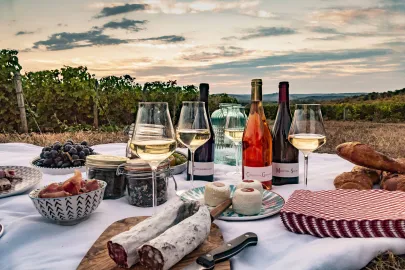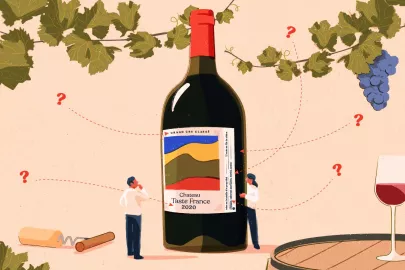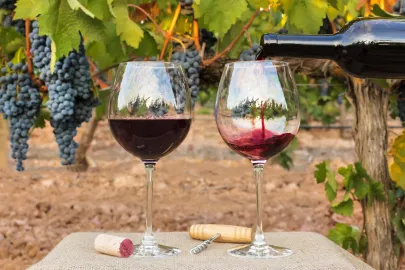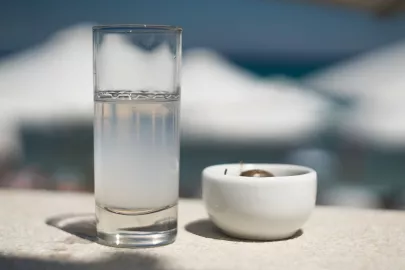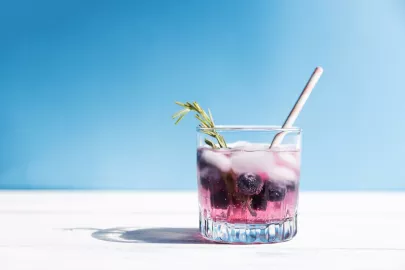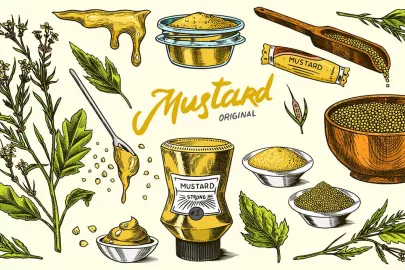Discover Your Next Favorite Wine: A Guide to Hidden Gem Grapes
Feeling curious but overwhelmed by the world of wine? We've got your back! If you have a favorite grape variety, we’ve got recommendations and alternatives that will help you find your next favorite wine. A new go-to grape may be just around the corner!

Exploring the world of wine can feel intimidating, though finding new bottles you’re certain to like is actually easier than you may think—especially if there’s a specific grape variety you know you love. Like other fruits and veggies, each grape variety boasts its own unique structure and flavors, and finding those with similar characteristics to your favorites offers a safe starting point for seeking out new wines. Not sure where to begin? We’ve put together a list of France’s most popular grape varieties and where to find them, as well as suggestions of other grapes to check out for something familiar but new. Fair warning: a new go-to grape may be in your near future!
Sauvignon Blanc
Sauvignon Blanc is one of the most beloved white grape varieties in the world, and it’s really no surprise why. Known for its high acidity and pleasant balance between fruit flavors, flintiness, and herbaceousness, the variety thrives in a handful of world-renowned viticultural regions, many of which are found in France. Best of all, Sauvignon Blanc-based whites pair with a variety of equally refreshing foods, including salads, raw bar favorites, and a variety of fresh cheeses.
❤ Why You Love It: High acidity, zesty citrus flavors, undertones of herbaceousness, pepper, and/or smoke
📍 Where To Find It: The Loire Valley (most notably in Sancerre, Pouilly-Fumé, and Touraine), Bordeaux (frequently blended with Sémillon to create Bordeaux Blanc blends)
🍷 Your Next Favorite Wine: If you love the acidity and food friendliness of Sauvignon Blanc, then checking out the Riesling-based wines from Alsace will also be up your alley, as will the bright, Alpine-influenced whites of Savoie (Altesse, Jacquère, Gringet)
Chardonnay
Chardonnay is often referred to as the chameleon of the wine world, as the grape is somewhat of a neutral canvas. This means that terroir specifics and vinification choices play a strong influence in how final wines made from it will taste. Although Chardonnay-based wines often have a reputation for being oaky and buttery, this versatile grape variety is capable of producing wines all over the flavor profile spectrum, including those that are bright and balanced—and its ample amount of natural acidity is a big reason why.
❤ Why You Love It: Flavorful and sometimes rich, though marked by refreshing acidity
📍 Where To Find It: Burgundy (Chablis, Côte d’Or, Côte Chalonnaise, Mâconnais), Champagne
🍷 Your Next Favorite Wine: For concentrated, richer white wines with moderate amounts of acidity, look no further than the Chenin Blanc-based whites of the Loire Valley. Love Blanc de Blancs Champagne? Then check out a bottle of sparkling Blanquette from France’s southerly Limoux appellation (Languedoc), which uses a minimum of 90% of the local Mauzac variety, along with a variety of crémants (Champagne-style wines produced outside of the region) crafted all across France from a handful of different grape varieties.
Merlot
Merlot is deemed one of the most crowd-pleasing red wines, as it finds itself right in the middle of the body, acidity, and tannin spectrums—that’s to say, the wines are medium bodied and boast moderate levels of acidity and tannin. Not too bold and not too light, Merlot-dominant wines offer a relatively neutral solution for large groups, as the wines are almost always approachable and accessible.
❤ Why You Love It: Smooth and silky, moderate levels of acidity and tannins, notes of blackberry, black cherry, chocolate, and plum
📍 Where To Find It: Bordeaux (mostly Right Bank, popular appellations include Saint-Emilion and Pomerol), Sud-Ouest (Bergerac, Cahors)
🍷 Your Next Favorite Wine: If you love the dark fruit flavors found in Merlot, then looking to a Malbec from Cahors promises an equally flavor-packed journey. Curious to explore something dark-fruited and palate-coating from the south? Then a Mourvèdre-dominant wine from Bandol is a great place to start.
Cabernet Sauvignon
Fans of full-bodied reds are no stranger to Cabernet Sauvignon. Known for its high levels of acidity and tannins, this powerful grape variety provides the backbone to some of the world’s most structured and long-lived red wines—though contrary to the monovarietal wines of Napa, most of France’s Cabernet Sauvignon-based wines are produced as blends.
❤ Why You Love It: Full bodied, high acid / tannins, flavors of dark fruits, tobacco, spice, and often a touch of herbaceousness
📍 Where To Find It: Bordeaux (Left Bank)
🍷 Your Next Favorite Wine: Similar to Merlot, Cabernet Franc is also a parent variety of Cabernet Sauvignon, so venturing over to blends made with dominant amounts of those varieties could offer a great start. Generally choose Left Bank Bordeaux? Seek out a Merlot-dominant expression from the Right Bank, or grab a bottle of varietal Cabernet Franc from the Loire Valley.
Grenache
Can’t get enough Côtes du Rhone in your life? Then you’re likely a fan of Grenache, which generally makes up the larger part of these southerly French red blends. Known for its medium levels of acidity and tannin, these wines unsurprisingly tend to fall in the middle of the spectrum—meaning they’re solid candidates for pleasing a large crowd.
❤ Why You Love It: Approachable levels of acid and tannin, signature flavors of red fruits (raspberry, hard red candies) and citrus rind
📍 Where To Find It: Southern Rhône, Languedoc, Provence
🍷 Your Next Favorite Wine: Grenache fans will likely enjoy fuller-bodied expressions of Gamay from Beaujolais, as well as single-varietal or blends from the Southern Rhone or the Languedoc region.
Syrah
Beloved for its peppery flavors, high acidity, and medium-high levels of tannins, Syrah-based wines have long been a favorite amongst full-bodied red wine lovers. When crafted by talented producers, these bold, structured wines are capable of withstanding long bouts of aging in the cellar, and complement a variety of smoked meats, grilled veggies, and peppery sauces.
❤ Why You Love It: Structured and peppery with signature notes of red and black fruits, violet, black olive, bacon fat, and cracked pepper
📍 Where To Find It: Northern Rhône, Southern Rhône (often used in blends)
🍷 Your Next Favorite Wine: If inky, full-bodied reds are your thing, then you’ll definitely love the Malbec-based wines of the Sud-Ouest (where the grape is frequently referred to as Cot, not Malbec). Similarly, a robust, Mourvèdre-based red from Provence will equally do the trick!
Pinot Noir
Treasured by new wine drinkers and long-standing collectors alike, Pinot Noir is one of the wine world’s most adored varieties. Known for its high levels of acidity and low to medium levels of tannins, wines from Pinot Noir are produced all over the flavor profile—and price point—spectrums. Although some of the world’s most expensive wines are produced from this beloved variety, a slew of affordable options from the Loire Valley and parts of Burgundy (think regional bottlings or those from southerly sub-regions) are able to be found.
❤ Why You Love It: High acidity, low levels of tannins, signature notes of red fruits (cherry, raspberry), mushroom, and earth
📍 Where To Find It: Burgundy, Loire Valley, Champagne
🍷 Your Next Favorite Wine: For a high-acid, light-bodied red alternative, diving into the Gamay-based wines of Beaujolais is a great start, as are Pinot Noir expressions from Alsace. These low-tannin wines are equally food friendly, and like most bottles of Pinot Noir, come to life when enjoyed with a slight chill. Bonus rec: For equally high-acid, low-tannin, and all-around delicious options, dive into a bottle of Trousseau or Poulsard from the Jura, or a Mondeuse-based red from Savoie.
Contributor

Editor

